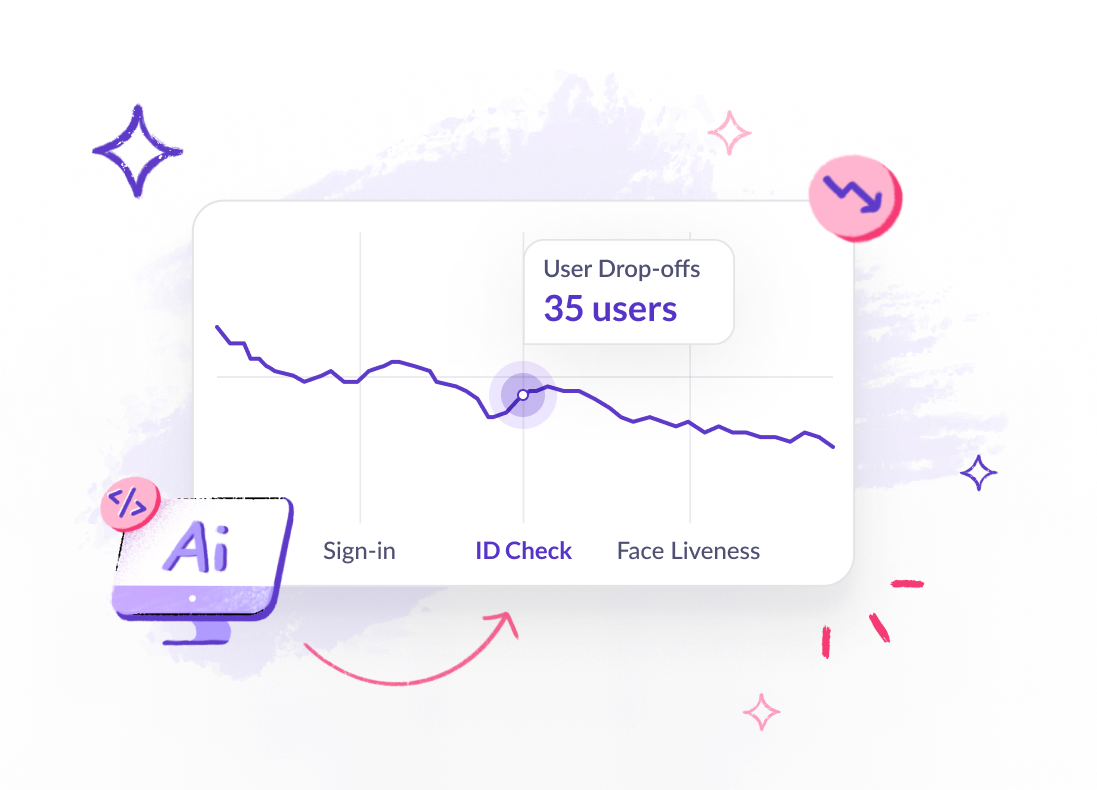RC or vehicle registration certificate is a certificate issued by the Regional Transport Office (RTO), mandatory under the Motor Vehicle Act.
RC verification is the process of verifying the vehicle owner’s details and vehicle registration certificate from the VAHAN database.
RC verification is a crucial document for businesses offering digital lending and insurance. Having valid vehicle RC details is a prerequisite when purchasing vehicle insurance. RC verification can also be done as part of an identity verification and address verification workflow for businesses wanting to onboard users.
There are various other situations where you might need to verify the details of a vehicle’s registration. Here are a few examples:
Let’s look at the step-by-step process of how the RC Verification API works:
The output from the RC verification API typically includes:
The following vehicle details are included in the output:
The following vehicle registration details are included in the output:
The following vehicle owner details are included in the output:
Accessing accurate and up-to-date vehicle registration data is challenging. Businesses also need to be careful about document forgery as instances of counterfeit documents and fraudulent documents increase.
Moreover, there are various RC formats and regional languages across different states and regions in India, which adds to the complexity of the verification process.

Handling sensitive data raises concerns about privacy and security compliance, necessitating robust authentication mechanisms and fraud detection algorithms to mitigate risks effectively.
Compliance with regulatory requirements, including data protection laws and industry standards, is also very critical.
RC verification process, as a part of the overall identity verification process, is a long process with several points of friction. Manual verification and complex workflows contribute to customer drop-offs — eventually leading to a low straight through processing (STP) rate for your business.
Here’s how HyperVerge’s RC verification API works to check vehicle owner details and verify the authenticity of information related to vehicle registration certificates:

1. Central Database Checks: The API leverages central databases recognized by the Indian government to verify the authenticity of the information provided by users, such as the parivahan portal.
2. Simple Onboarding Journeys: To reduce friction during the onboarding process, the API requests minimal and easy inputs from users. This simplifies the user experience, making it more convenient for individuals to provide the necessary information required for verification.

3. Smart Auto-filling: The API utilizes data stored in local databases to fetch all relevant information associated with the user, such as personal details and vehicle information. This data is then automatically populated into the verification process, eliminating the need for users to manually input the information again.
4. Reduced Manual Hours: The process is automated with various fallback options built-in. This ensures that users don’t drop off when one of the workflows fails. This also reduces the Turnaround Time (TAT), making the verification process faster and more efficient.

Is your financial product onboarding process stitched together with several point solutions? With HyperVerge ONE you can build seamless end-to-end journeys. With our integration capabilities, you can effortlessly configure user onboarding workflows and craft intuitive UI/UX experiences without ever touching a line of code.
Worried about user drop-offs during downtimes? HyperVerge allows you to set up automated fallback options, ensuring a smooth journey for your users regardless of the circumstances. You can also dive deep into analytics on conversion rates, identifying and optimizing friction points to enhance user experience and drive higher success rates.
Explore HyperVerge ONE here. Want to see it in action? You can request a customized demo here.
1. What is a Registration Certificate (RC)?
A Registration Certificate (RC) is an official document issued by the Regional Transport Office (RTO) in India, confirming that a motor vehicle has been registered with the authorities. It contains vital information about the vehicle, including its ownership details, vehicle class, insurance information, and more.
2. How to find vehicle owner details to verify RC manually?
To do this manually, you can check vehicle registration details and find the owner information by visiting the Parivahan website,navigating to the “Vahan”, and following the steps mentioned below:
1. Enter the vehicle’s registration number.
2. Complete the CAPTCHA code verification.
3. Click on the “Search” or “Submit” button.
4. You’ll be directed to a new page where you can view all the details associated with the vehicle’s RC, including owner information, vehicle class, insurance details, and more.
5. Once completed, you can view the RC details, including the validity period, fitness certificate status, and other relevant information.